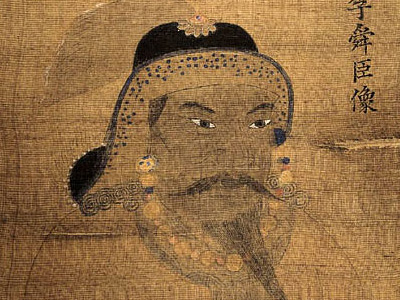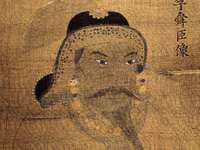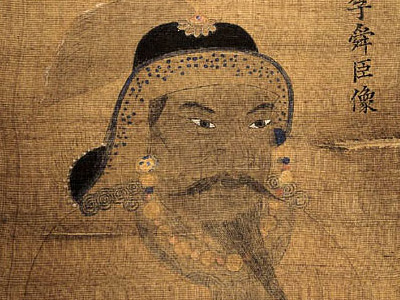Yi Sun-Shin 이순신 (1545-1598)

Final battle and Admiral Yi's death
On December 15, 1598, a huge Japanese fleet under the command of Shimazu Yoshihiro, was amassed in Sachon Bay, on the east end of Noryang Strait. Shimazu's goal was to break the allied forces' blockade on Konishi Yukinaga, join the two fleets, and sail home to Japan. Admiral Yi, meanwhile, knew exactly where Shimazu was, after receiving reports from scouts and local fishermen.
At this time, the Joseon fleet consisted of 82 panokseon and three turtle ships, with 8,000 soldiers under Admiral Yi. The Ming fleet consisted of six large war junks, 57 lighter war galleys and two panokseon given to Chen Lin by Admiral Yi, with 5,000 Ming soldiers of the Guangdong squadron and 2,600 Ming marines who fought aboard Joseon ships.
The battle began at two o'clock in the early morning of December 16, 1598. Like Admiral Yi's previous battles, the Japanese were unable to respond effectively to the Korean's tactics. The tightness of Noryang Strait hindered lateral movement, and Yi's maneuvers prevented the Japanese fleet from boarding their enemies' vessels, their primary naval tactic.
Advertisement

These books are available for download with iBooks on your Mac or iOS device, and with iTunes on your computer. Books can be read with iBooks on your Mac or iOS device.

These books are available for download with iBooks on your Mac or iOS device, and with iTunes on your computer. Books can be read with iBooks on your Mac or iOS device.
( Click image to enlarge)
As the Japanese retreated, Admiral Yi ordered a vigorous pursuit. During this time, a stray arquebus bullet from an enemy ship struck Admiral Yi, near his left armpit. Sensing that the wound was fatal, and fearing a repeat of the Battle of Chilchonryang, the admiral uttered, "The war is at its height -- wear my armor and beat my war drums. Do not announce my death." He died moments later.
Only two people witnessed his death: Yi Hoe, Yi's eldest son, and Yi Wan, his nephew. Admiral Yi's son and nephew struggled to regain their composure and carried the admiral's body into his cabin before others could notice. For the remainder of the battle, Yi Wan wore his uncle's armor and continued to beat the war drum to encourage the pursuit.
During the battle, Chen Lin found himself in trouble many times and Yi's flagship rowed to his rescue. When Chen Lin called for Admiral Yi to thank him for coming to his aid, he was met by Yi Wan, who announced that his uncle was dead. It is said that Chen himself was so shocked that he fell to the ground three times, beating his chest and crying. News of Admiral Yi's death spread quickly throughout the allied fleet and both Joseon and Ming sailors and fighting men wailed in grief.
Admiral Yi's body was brought back to his hometown in Asan to be buried next to his father, Yi Jeong (in accordance to Korean tradition). Shrines, both official and unofficial, were constructed in his honor all throughout the land."
HISTORY

RESOURCES
This article uses material from the Wikipedia article "Yi Sun-Shin", which is released under the Creative Commons Attribution-Share-Alike License 3.0.
© Stories Preschool. All Rights Reserved.










